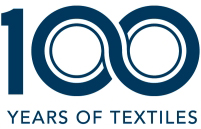Irresistible: The Global Patterns of Ikat
February 24-December 21, 2024
Prized worldwide for producing vivid patterns and colors, the ancient resist-dyeing technique of ikat developed independently in communities across Asia, Africa and the Americas, where it continues to inspire artists and designers today. This exhibition explored the global phenomenon of ikat textiles through more than 70 masterful examples from countries as diverse as Japan, Indonesia, India, Uzbekistan, Côte d'Ivoire and Guatemala.
About the Exhibition
Irresistible: The Global Patterns of Ikat celebrated the artistic and cultural legacy of ikat, a sophisticated resist-dyeing technique used across the globe to pattern textiles. Ikat designs come to life before the threads are woven into fabric through a meticulous practice of selectively binding and dyeing threads before weaving. The materials, skill and time required to create ikat fabrics have made them potent symbols of wealth and high status in many cultures.
Irresistible took visitors on a world tour of ikat that spanned centuries and cultures, from India, Monsoon Asia, West and Central Asia, Japan, Africa and the Americas. Highlights included a man's wrapper cloth made by Baule male weavers of Côte d'Ivoire, West Africa’s most widely recognized producers of ikat, and a hip wrapper made for Balinese royalty, whose realistic, figural imagery represents a tour de force of ikat art. Five short films throughout the exhibition provided case studies of contemporary ikat production in India, Indonesia, Cambodia, Japan and Uzbekistan.
The fascination of ikat endures today. Textile artists worldwide are revitalizing local traditions, and fashion and interior designers continue to draw inspiration from ikat’s vibrant patterns. In Irresistible, contemporary works by influential artists and designers such as Ed Rossbach (1914-2002) and Isabel Toledo (1960-2019) underscored the vitality of this ancient technique.
Acknowledgements
Major support for this exhibition and related programming was provided by The Coby Foundation, Ltd., the E. Rhodes and Leona B. Carpenter Foundation, the Fund for Contemporary Textile Art, the Latin American Research Fund, the Megalli Family Endowment and Sylvia Bergstrom, Joe Rothstein and Marin Hagen. Additional support was provided by the American Conference on Oriental Rugs, Terry Adlhock and Jeffrey Hunter, Deborah M. Anderson, the Bruce P. and Olive W. Baganz Fund for The Textile Museum Exhibitions and Publications, the Contemporary Textiles Endowment, Tina M. deVries, Virginia McGehee Friend, Helen K. King, Edwina M. Nelon, Mary Jo Otsea and Richard H. Brown, Roger and Claire Pratt, Bonnie and Tom Reilly, David M. Sloan, and Pamela Tripp-Melby.
Young adult’s robe, Uzbekistan, 1870s. The Textile Museum Collection 2005.36.144. The Megalli Collection.
Man’s tunic, Nigeria, mid-20th century. The David and Marita Paly Collection AF04.
Poncho, Chile, Mapuche people, 19th century. The David and Marita Paly Collection AM34.
Man's outer hip wrapper, Indonesia, late 19th/early 20th century. The David and Marita Paly Collection MA11.
Tiraz fragment, possibly turban cloth end, Yemen, tenth century. The Textile Museum Collection 73.213. Acquired by George Hewitt Myers in 1935.
Skirt, northeast Thailand, Tai-Lao people, c. 1935-1940. The Textile Museum Collection 1971.18.14. Gift of Mr. and Mrs. James Madison Andrews.
Exhibition Program Videos
Video Tour












